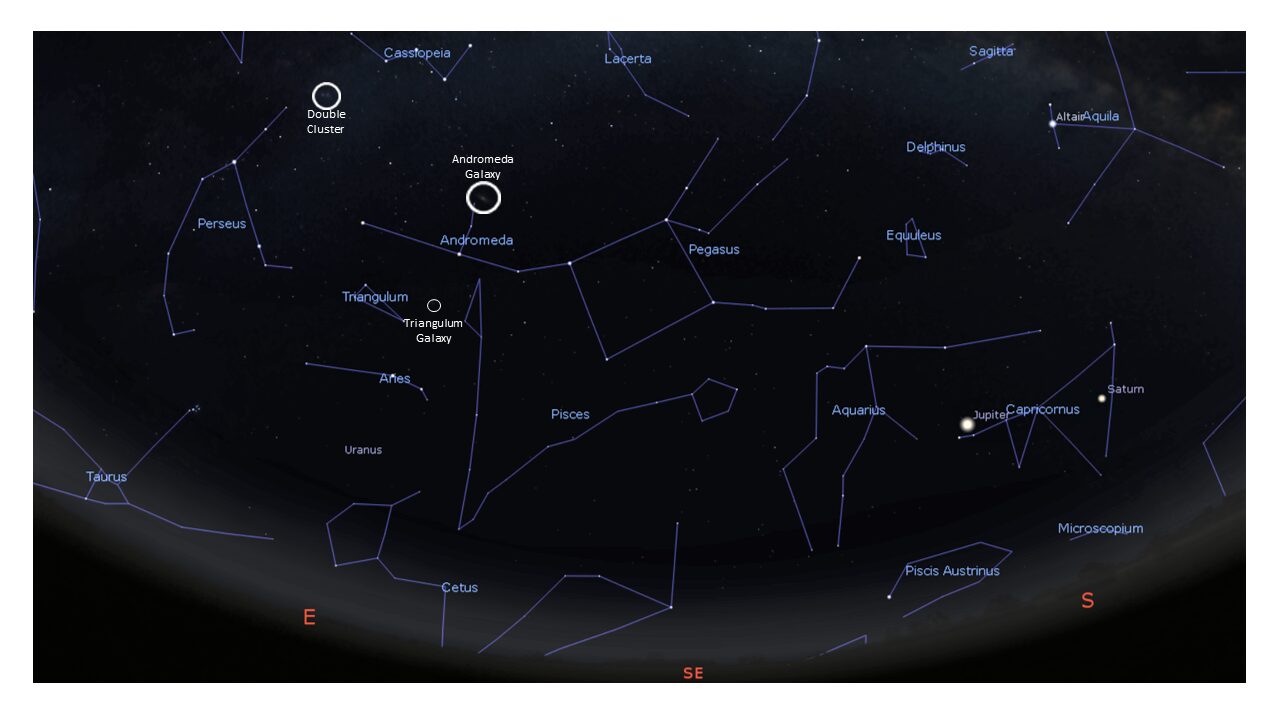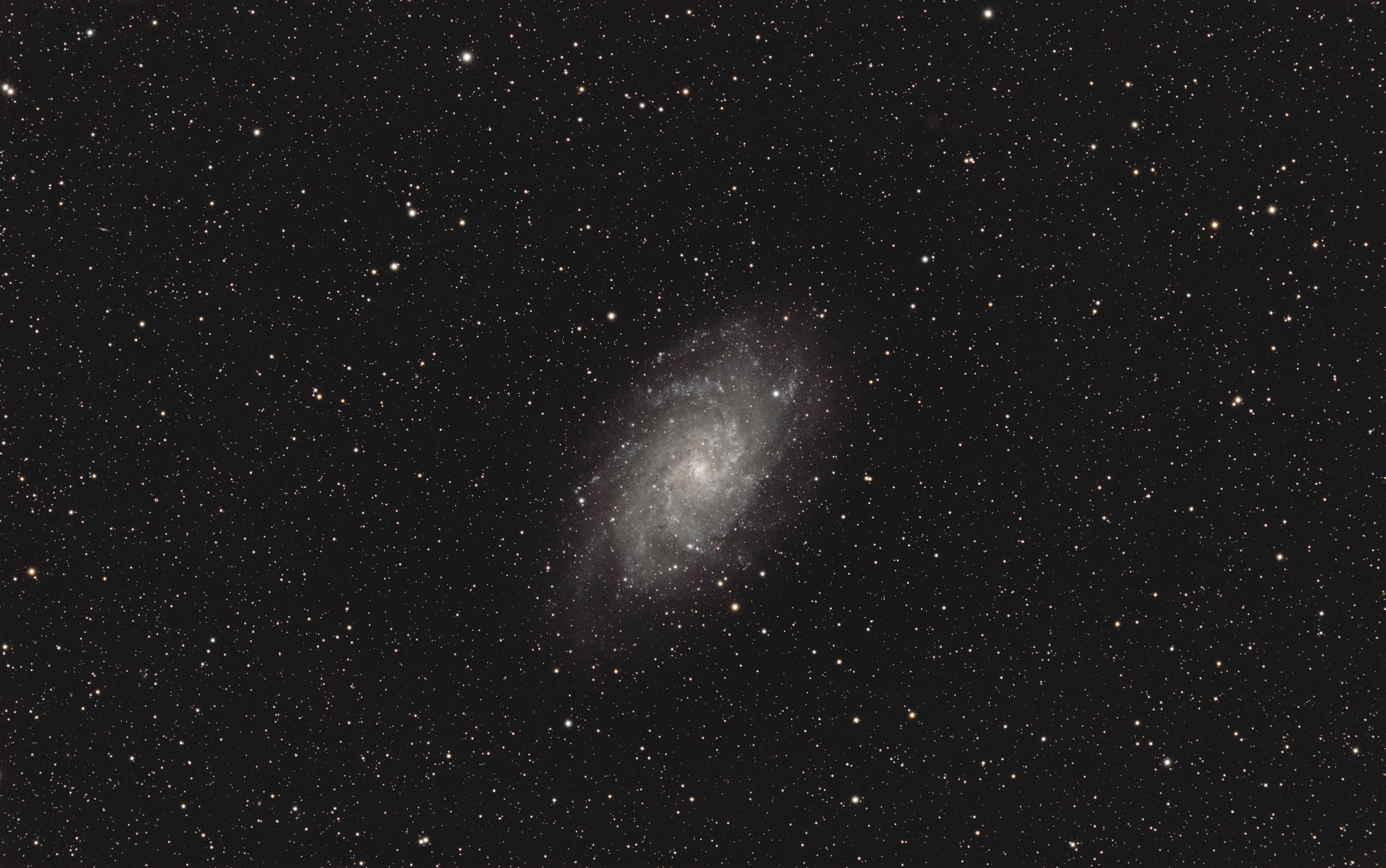The evenings have taken on an autumnal chill in recent days, and having passed the equinox last month, there is now more night-time than daylight, perfect for a night of stargazing!

The large constellations of Pegasus, Aquarius and Pisces appear in the south east soon after dark, and now dominate the southern sky through the night.
The ‘great square’ that makes up the body of Pegasus (the mythical flying horse that appears upside-down from UK skies!) can be used as a guide to finding the Andromeda Galaxy, the most distant object visible with the naked eye.
Another way is to use the distinctively ‘W’ shaped constellation of Cassiopeia, where the right-hand ‘v’ of the ‘W’ points in the direction you should look to find the great galaxy.
Look for the Pleiades star cluster rising in the north-east soon after dark and see if you can spot the ‘Double Cluster’, which will appear as a faint smudge of light between the constellations of Cassiopeia and Perseus.
More on that in coming months!
Meteor showers this month
October sees two meteor showers in our night skies.
The Draconid Meteor Shower peaks around 8-9 October, and will see fragments of debris from Comet Giacobini-Zinner entering our atmosphere, relatively slowly by cosmic standards, at ‘just’ 21 kilometres (13 miles) per second.
While this tends to be a less active meteor shower, it falls just a couple of days after the new Moon, so the darker skies will enable you to see more of the faint meteors than October’s other meteor shower.
The Orionid Meteor Shower peaks around 21-22 October, and is the result of fragments of debris left by Halley’s Comet as it last passed through our inner solar system in 1986.
While the near-full Moon will limit the number that can be seen, the relatively fast speed of these meteors (65km or 40 miles per second) makes these meteors spectacular to see.

The Moon and Planets
Look south-east after sunset to see Jupiter and Saturn emerge. The gas giants reach their highest point in our southern night skies between 9 and 10pm this month.
Brightest planet Venus can be seen low to the south-west horizon in the hour after sunset, and towards the end of the month, early risers can catch Mercury rising in the eastern skies just before dawn.
October’s full moon will appear in the constellation of Pisces on 20 October, while nights around the new moon of 6 October will provide darker skies.
Space Exploration
A number of exciting space exploration missions are developing in the coming weeks.
NASA’s ‘Lucy’ mission to study the swarm of asteroids that interact with Jupiter’s orbit is due to launch this month. You can find more information here.
The European Space Agency’s ‘Bepi-Columbo’ mission will fly past the innermost planet Mercury at the start of the month.
It is the first of a number of flybys the spacecraft will perform before being captured in orbit around Mercury in 2025. You can find more information here.
The International Space Station
There are a number of visible passes of the International Space Station this month, with the brightest and easiest to spot occurring at the end of the month.
Visit https://www.heavens-above.com/ for all of the passes for your location.
Did you know?
Dwarf planet Pluto is nearly 40 times further from the Sun than the Earth is.
One orbit of the Sun, or ‘year’ on Pluto takes 248 earth years, so it has yet to complete a single orbit since it was discovered in 1930. Outermost planet Neptune has completed just one of its 165-year orbits of the sun since its discovery in 1846.
Leave a comment